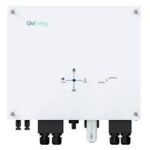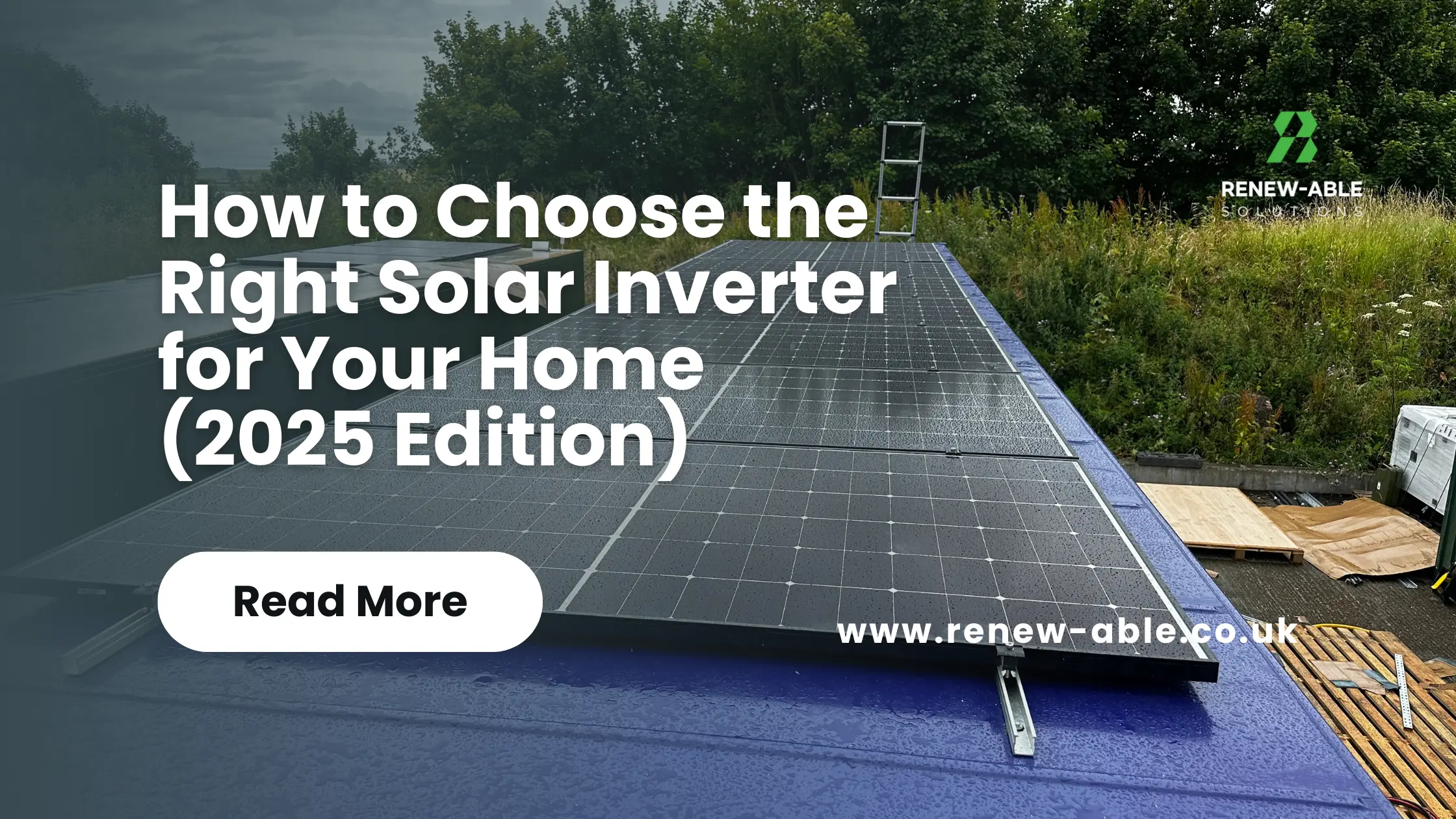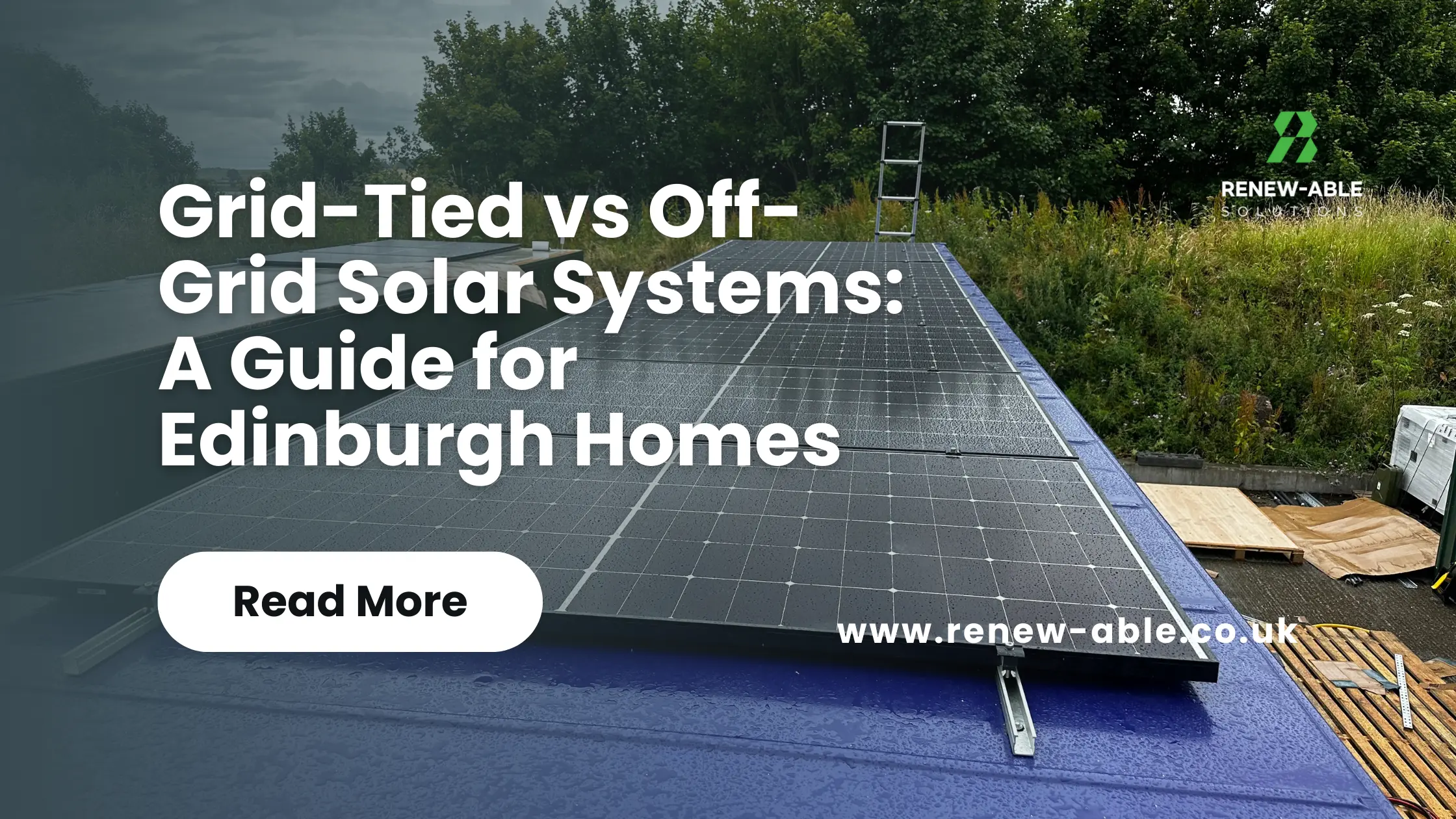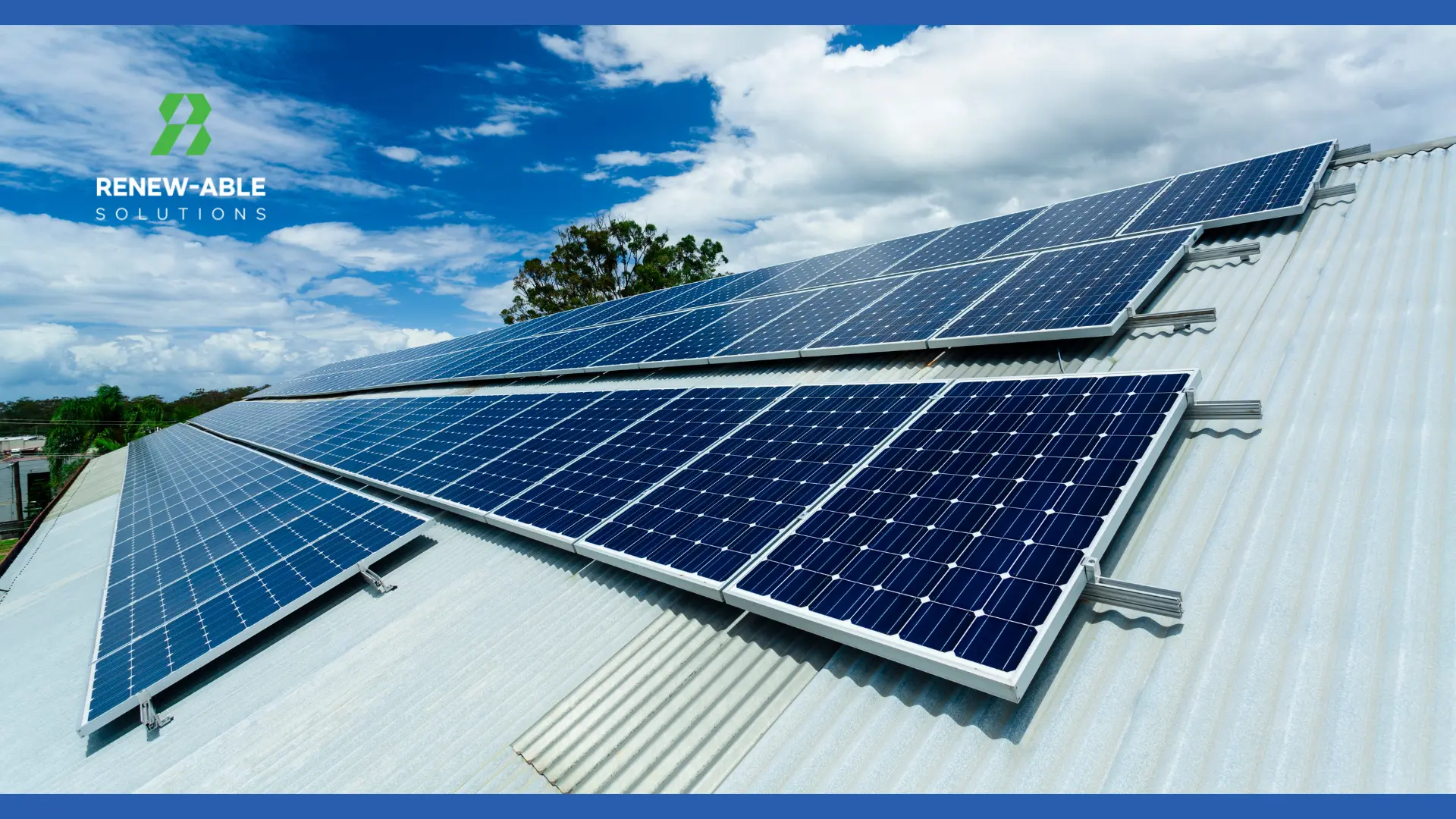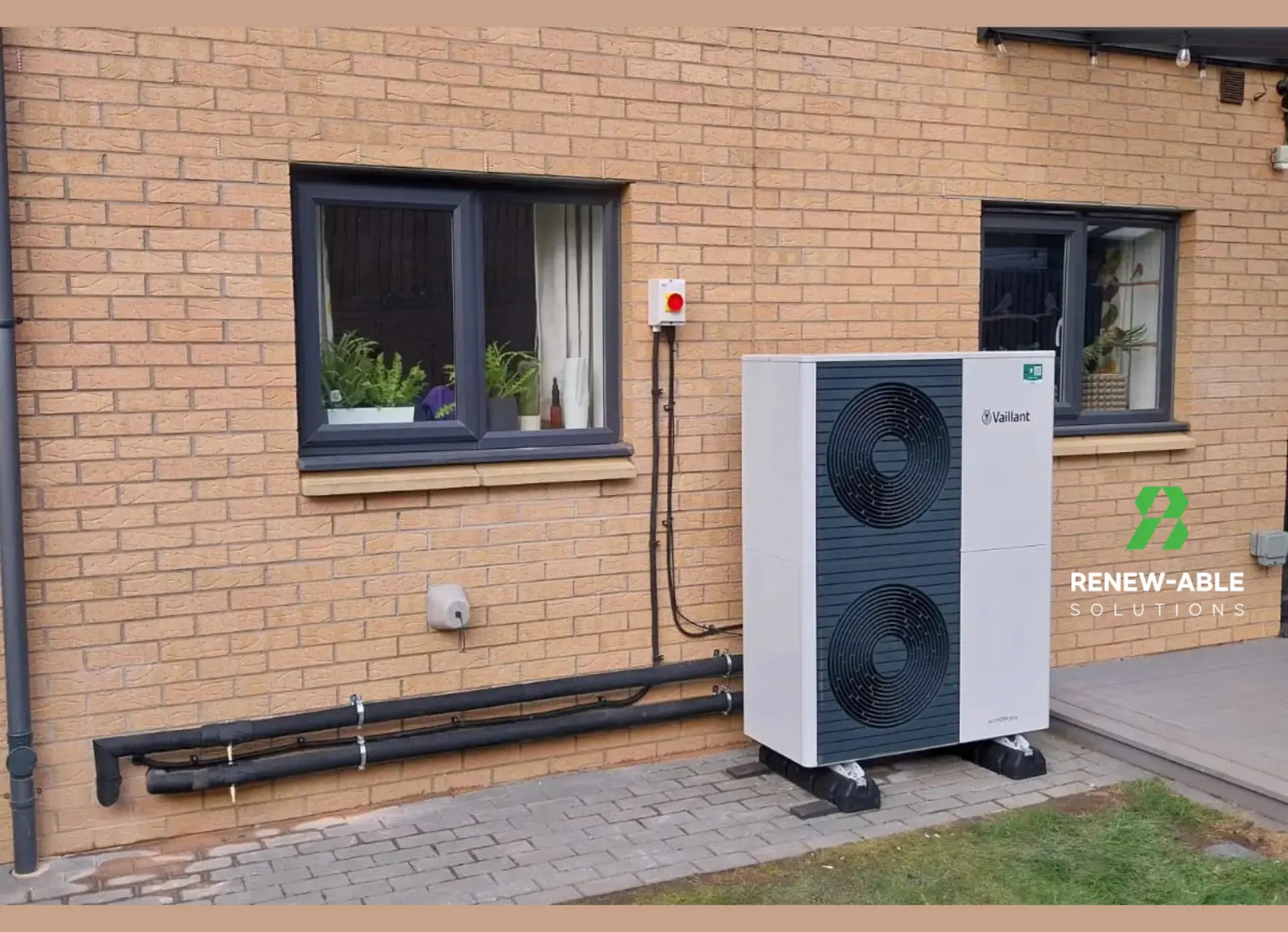Hybrid Inverter – What does it do
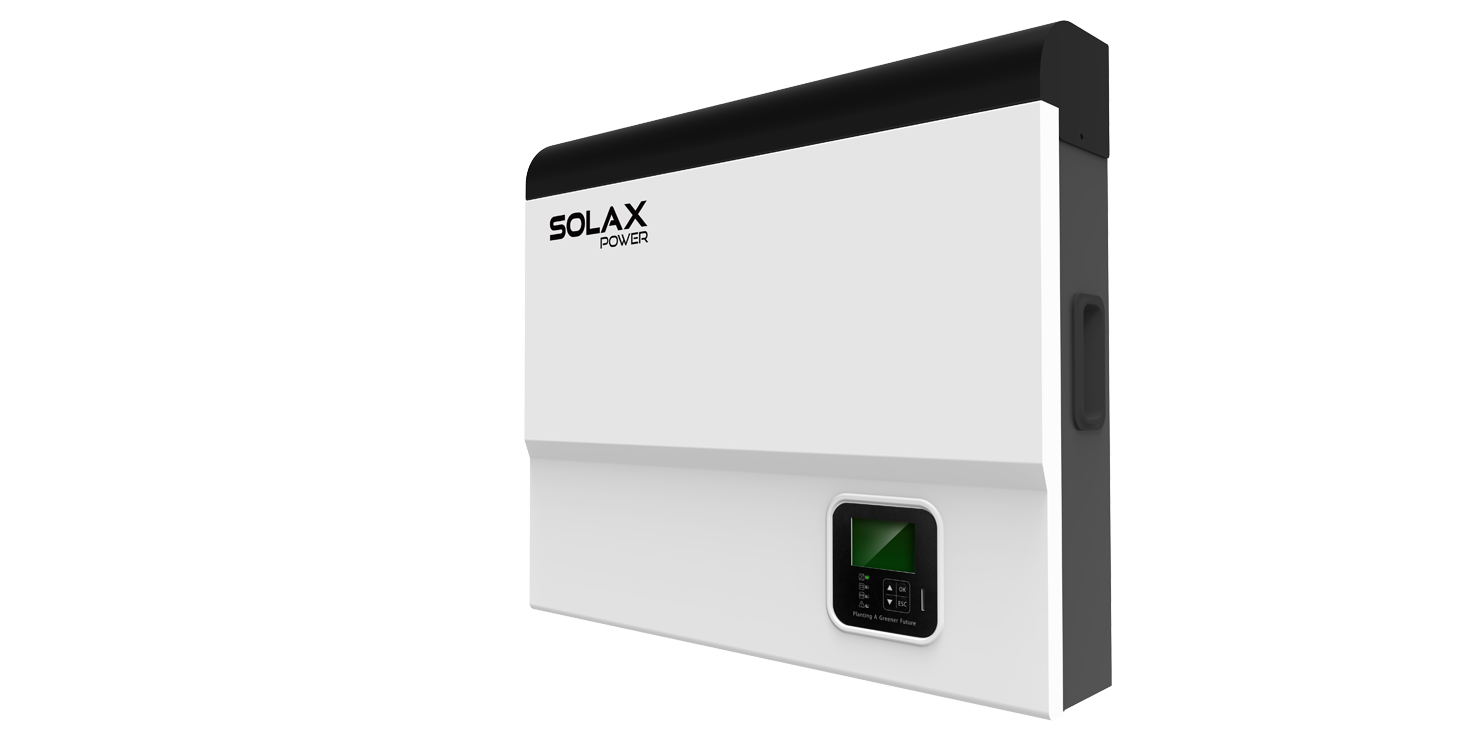
Hybrid Inverter – What does it do – What is a solar hybrid inverter?
Traditionally, an inverter is the component in a solar system that converts the DC power from the panels into AC power suitable for the home appliances and national grid. A hybrid inverter fulfils this purpose, while also sending DC power to a battery to conserve it for later use, and from the battery when required.
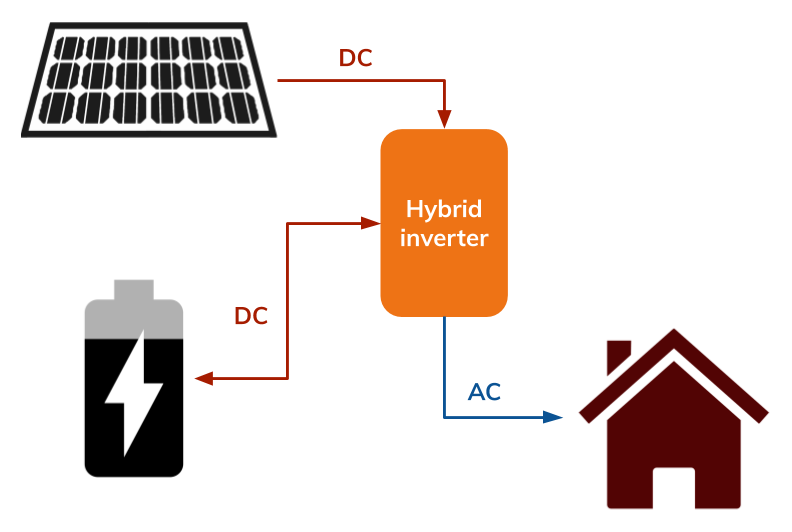
Many hybrid inverters are made to be compatible with high voltage batteries, but you can also get hybrid inverters integrated directly into a battery.
Advantages of hybrid inverters
There are a few benefits to using a hybrid inverter with DC coupled batteries:
- Centralised monitoring of the array’s performance (it’s not split between multiple inverters or component manufacturers).
- DC coupling reduces the losses from AC-DC conversion. Battery charging has approximately 95% efficiency, compared to 90% with AC coupling.
- It can be cheaper to install a new hybrid inverter with a DC coupled battery than retrofitting an AC coupled battery to an existing system, as only one inverter and install is needed.
Disadvantages of hybrid inverters
- Hybrid models are more expensive the standard string inverters by about 50%.
- They only integrate with DC coupled batteries, which means they’re not compatible with the best all round battery on the market – Tesla Powerwall 2.
Why have a battery?
Unfortunately many of us are out during the daytime, when our solar panels are producing the majority of their power. Some of that will be used for background loads (fridges etc) but any excess is typically sent to the grid… unless you can store it.
With battery storage, you can save up the energy you generate throughout the day and use it in the evenings. It can increase the proportion of demand covered by solar by about 20% on average. Alongside this, you can take advantage of other battery benefits like power cut backup and buying cheap off-peak electricity to use during peak hours.
Do you need a hybrid inverter to have a battery?
In the old days, off-grid batteries were DC coupled. In domestic settings, more recent batteries are AC coupled, particularly when retrofitted to existing solar systems with AC inverters. This means you don’t need a hybrid inverter to attach a battery to your system. In fact, our top recommended battery – Tesla Powerwall 2 – is AC coupled.
AC coupling vs DC coupling
If all this talk of AC and DC coupling has got you confused, let’s try to break it down.
DC is direct current. It’s the form of power generated by solar panels and used by batteries.
AC is alternating current. It’s the form of power used by appliances in our homes and for transmitting electricity across the grid, as it’s more stable over long distances.
Conversion between AC and DC (or vice-versa) will result in some power loss. For comparison, here’s a DC coupled battery with a hybrid inverter:
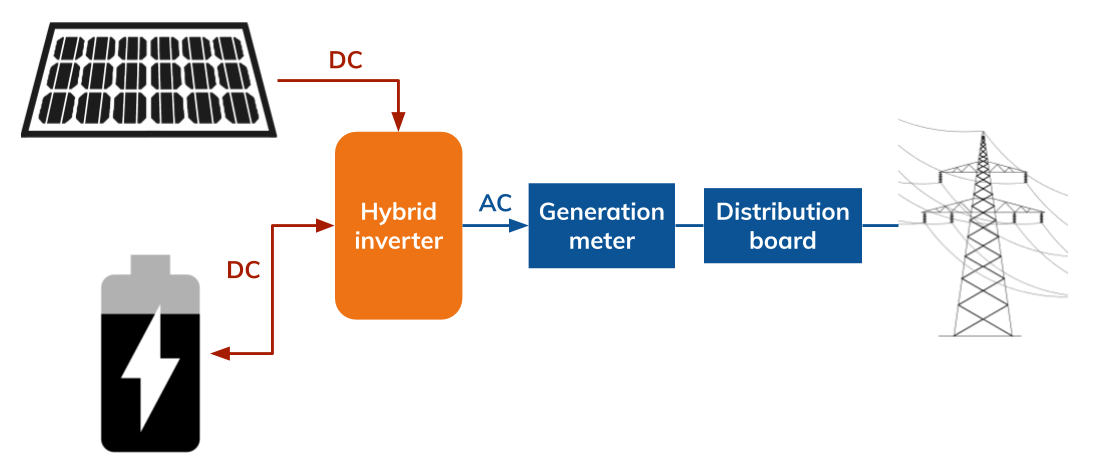
And here’s an AC coupled battery with solar and battery inverters:
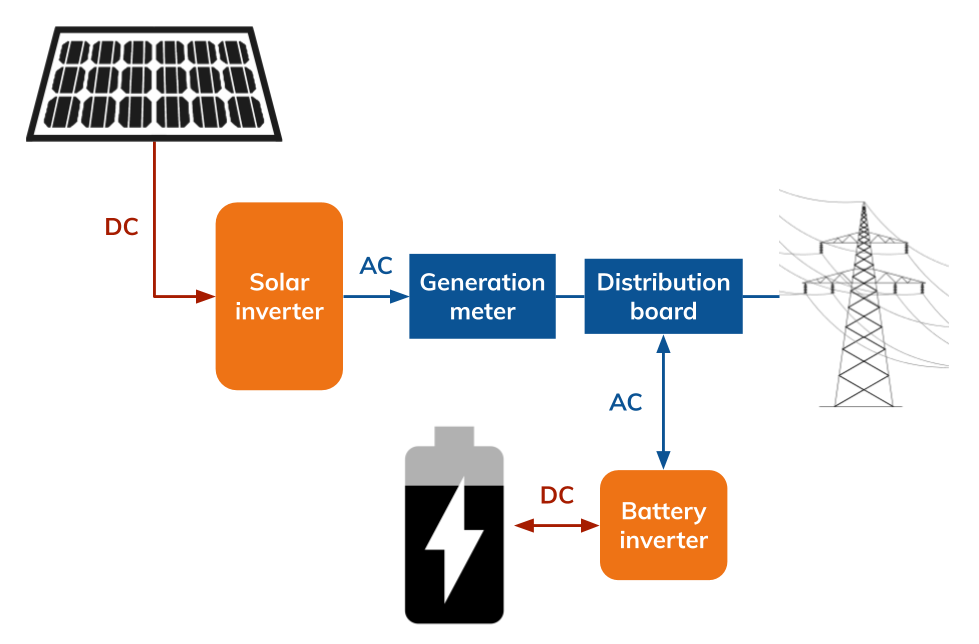
As you can see, energy going to the battery in the AC coupled example has to be converted twice (DC-AC then AC-DC), increasing the losses. Then when you come to use that energy, it has to be converted again (DC-AC), adding even more loss into the system. So in total, a DC coupled system has one conversion, while an AC coupled system has three.
Is a hybrid inverter right for you?
Hybrid inverters are well worth considering when installing a new PV system with storage, which is becoming increasingly common with newbuild properties. If you already have PV and are looking to add a battery, then it’s not economically beneficial to take out your existing inverter and replace it with a hybrid. Instead you can go for an AC coupled battery, like our recommended Powerwall 2.
Hybrid manufacturers
SolarEdge’s StorEdge
- Combine SolarEdge power optimisers with a single inverter and DC coupled battery.
- Monitor solar generation, panel performance and battery status from a single platform.
SolaX Hybrid
- SolaX offers a few different hybrid models.
- They’re more affordable than StorEdge but aren’t compatible with the optimisation features.
- Emergency Power Supply (EPS) function.
GivEnergy
GivEnergy hybrid inverters is a must for every house hold where you have backup power during power outages as well as saving on your utility bill. This unique hybrid utilizes the free giving sunlight and makes it an flexible power source that is available when you need it as well as direct battery charge from your PV array.
PRODUCT FEATURES
- Uses GivEnergy Lithium batteries that can be added to extend KWh of battery bank
- Batteries can be charged from Solar PV as well as your current utility supply
- Cloud based monitoring and control through WEB APP interface
- Inverter can be remotely updated Via Wi-Fi /4G dongle
- Inverter do have 2500W backup power capability
- Available in 3.6KW and 5KW
- Inverter has 2 MPPT PV inputs that allow you to have solar panels in 2 different orientations
- Installations can be for new installs or retrofit to an existing system
- Backup function supported

